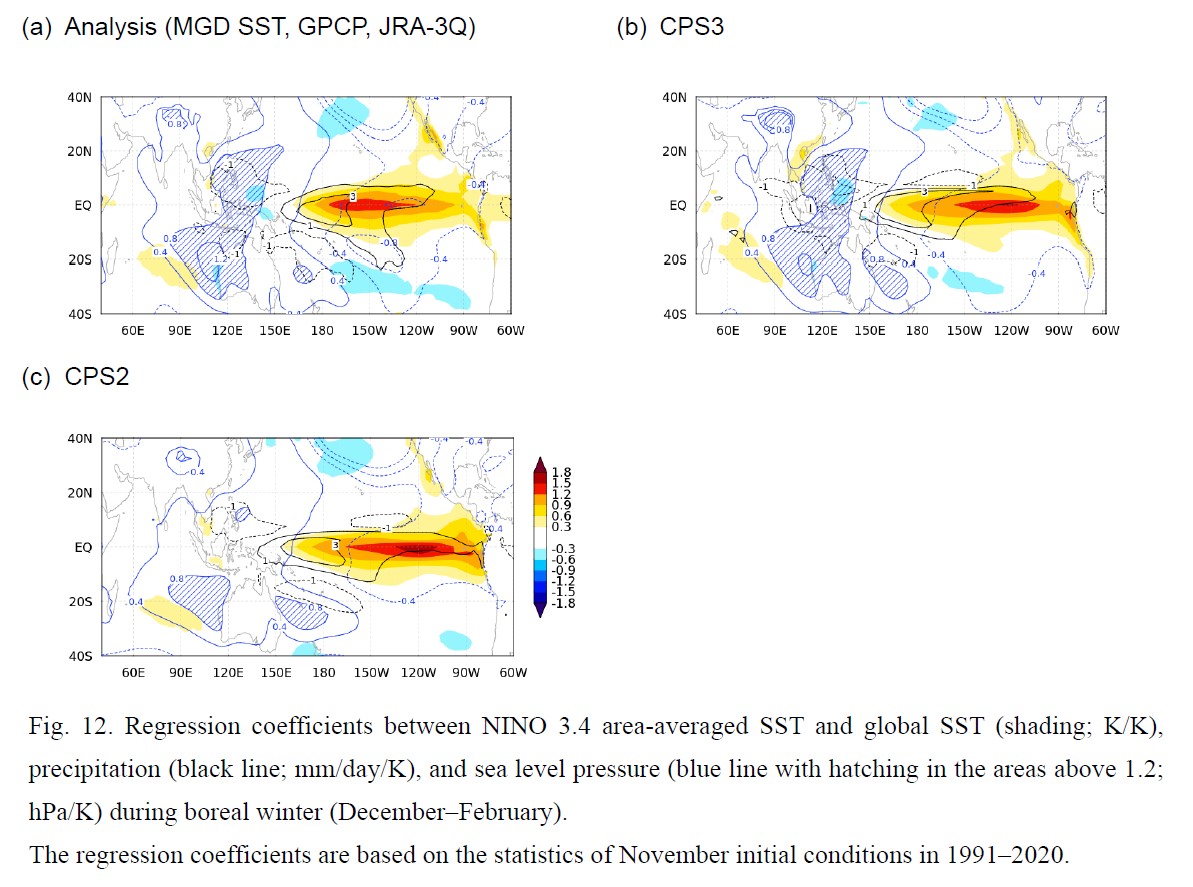JMSJ Highlights
Editor's Highlight : Hirahara et al. (2023)
Hirahara S., Y. Kubo, T. Yoshida, T. Komori, J. Chiba, T. Takakura, T. Kanehama, R. Sekiguchi, K. Ochi, H, Sugimoto, Y. Adachi, I. Ishikawa and Y. Fujii, 2023: Japan Meteorological Agency/Meteorological Research Institute Coupled Prediction System version 3 (JMA/MRI-CPS3). J. Meteor. Soc. Japan, 101.
https://doi.org/10.2151/jmsj.2023-009.
Early Online Release
Graphical Abstract
Editor in charge: Dr. Youichi Kamae
-
I highlight this paper which described a newly developed operational seasonal forecast system, JMA/MRI-CPS3.
- Ocean 4D-Var and sea ice 3D-Var data assimilation methods are newly introduced. The errors in the ocean analysis are now represented in the initial perturbations.
- Updated physical processes and increased resolution of the atmospheric model contribute to the improved climate reproducibility of the MJO and North Atlantic blocking highs.
- The introduction of a 0.25-degree-resolution ocean model provides a realistic representation of tropical instability waves and contributes to improved ENSO pattern.

Abstract
A new operational seasonal forecast system, Japan Meteorological Agency (JMA)/Meteorological Research Institute (MRI) Coupled Prediction System (CPS) version 3 (JMA/MRI–CPS3), has been developed. This system represents a major upgrade of the former system, CPS2. CPS3 comprises atmosphere, land, ocean, and sea ice forecast models and the necessary initialization systems for these models. For historical reforecasts, the atmospheric reanalysis dataset JRA-3Q provides initial conditions for the atmosphere and the external forcings for land, ocean, and sea ice analysis. In the operational forecast, JMA’s operational atmospheric analysis is used in conjunction with JRA-3Q to initialize the system in near-real time. The land surface model is initialized using an uncoupled free simulation, forced by the atmospheric analysis. The ocean and sea ice models are initialized with the global ocean data assimilation system MOVE-G3, which incorporates a newly developed four-dimensional variational method for temperature, salinity, and sea surface height and a three dimensional method for sea ice concentration. Compared with the previous system, the CPS3 forecast model components have approximately 2–4 times higher resolution: the atmosphere and land models are configured with ~55 km horizontal resolution, with 100 vertical atmosphere layers; and the ocean and sea ice models have a resolution of 0.25° x 0.25°, with 60 vertical ocean layers. The physical processes of the atmosphere are greatly refined in CPS3 relative to CPS2, resulting in improved representation of sub-seasonal to seasonal scale variability, including the eastward propagation of the Madden–Julian Oscillation, winter blocking highs in the North Atlantic, and coupled atmosphere–ocean variability during El Niño–Southern Oscillation events. Our historical reforecast experiment for 1991–2020 suggests that CPS3 has greater forecast skill than CPS2. The usability of the model output has been improved in CPS3 by reorganizing the operation schedule to provide daily updates of five-member ensemble forecasts.






